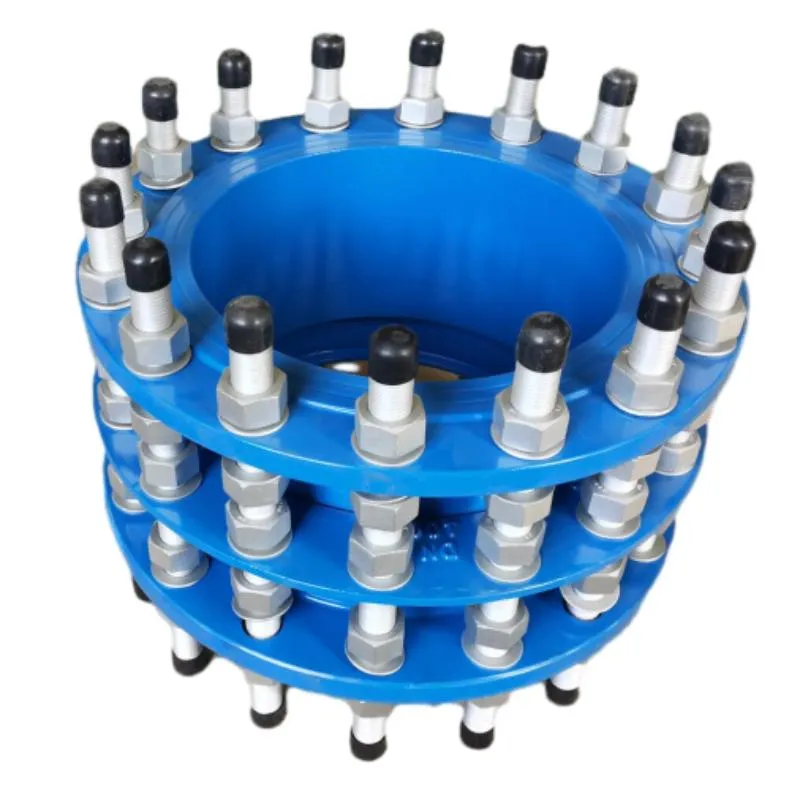A Study on the Effectiveness of Self-Restrained Dismantling Joints in Modern Construction Techniques
Self-Retained Dismantling Joint A Modern Solution in Engineering
In the realm of modern engineering and construction, the need for innovative solutions that ensure both structural integrity and ease of maintenance has never been more pressing. One such innovation is the self-restrained dismantling joint (SRDJ), a technology that has been gaining traction in various applications ranging from piping systems to large-scale construction structures.
Understanding the Self-Retained Dismantling Joint
A self-restrained dismantling joint is a mechanical connector that allows for the easy assembly and disassembly of connected components while maintaining a secure connection during regular operation
. This design is particularly useful in systems that require frequent maintenance or are subject to environmental changes that might necessitate dismantling for inspections or repairs.The key feature of the SRDJ is its ability to hold components in place without the need for additional fastening hardware, such as bolts or screws. Instead, the joint utilizes various design principles, including friction, interlocking geometries, and material properties, to ensure that the connection remains secure under operational loads.
Advantages of Using SRDJs
One of the most significant advantages of self-restrained dismantling joints is their ability to facilitate maintenance. In traditional joints, maintenance often requires complicated procedures that can lead to delays and increased costs. In contrast, SRDJs allow for quicker access to components, reducing downtime and improving overall operational efficiency.
Furthermore, the SRDJ design minimizes the risk of material fatigue. Traditional joints can experience wear and tear over time due to repeated assembly and disassembly. However, because the SRDJ is designed to maintain its integrity without the need for frequent re-tightening or replacement components, it can lead to longer service life and reduced maintenance costs over the system’s lifecycle.
self restrained dismantling joint

Applications in Various Fields
Self-restrained dismantling joints are versatile and can be employed in numerous engineering applications. For example, in the field of civil engineering, SRDJs are commonly used in pipe systems for water supply, sewage, and gas distribution. These systems often require periodic inspections, and the ease of dismantling provided by SRDJs simplifies maintenance processes significantly.
In the construction of modular buildings, where components are prefabricated and later assembled on-site, SRDJs provide a robust solution for connecting various structural elements. They ensure that the joints remain secure during construction while being readily accessible for adjustments or repairs post-installation.
Challenges and Future Prospects
While the benefits of self-restrained dismantling joints are substantial, there are challenges associated with their design and implementation. Achieving the right balance between strength and ease of disassembly requires careful material selection and engineering. Designers must also consider factors such as environmental conditions, load-bearing capacities, and the potential for material degradation over time.
Looking ahead, advancements in materials science and engineering simulations are expected to refine the capabilities of SRDJs even further. Innovations in smart materials and sensors could lead to the development of joints that can provide real-time feedback on their condition, enhancing safety and reliability.
Conclusion
The self-restrained dismantling joint stands as a testament to the continuous evolution of engineering solutions aimed at improving efficiency and sustainability in construction and maintenance. By facilitating easier access, reducing maintenance costs, and enhancing the durability of connections, SRDJs are not only making life easier for engineers but also contributing to the development of smarter, more resilient infrastructure. As the engineering field evolves, the adoption and refinement of these joints will likely play a crucial role in meeting the demands of modern society.
-
Square Sewer Cover Enhances Urban SafetyNewsAug.01,2025
-
Pipe Fitting Requires Precise AlignmentNewsAug.01,2025
-
Manhole Step Is DurableNewsAug.01,2025
-
Manhole Cover Is Found WorldwideNewsAug.01,2025
-
Hole Cover Frame On RoadsNewsAug.01,2025
-
Gully Grate Improves Road SafetyNewsAug.01,2025
-
Man Hole Cover Round Load CapacityNewsJul.31,2025
